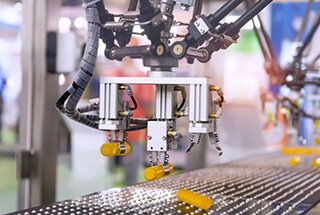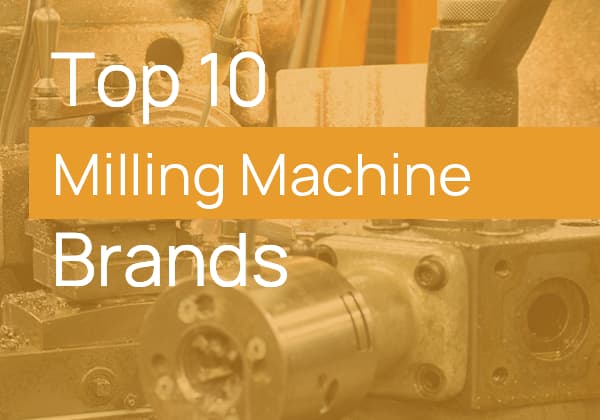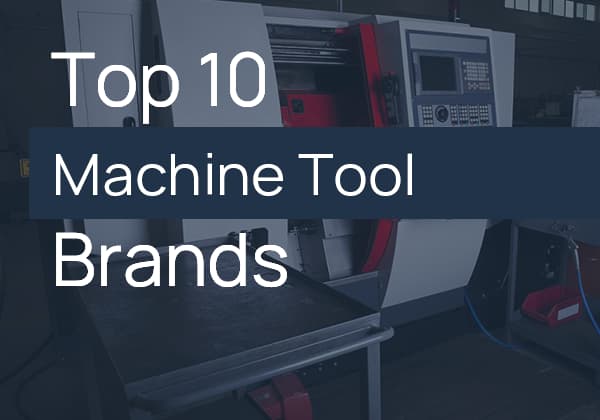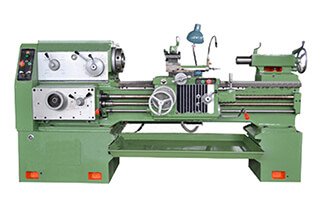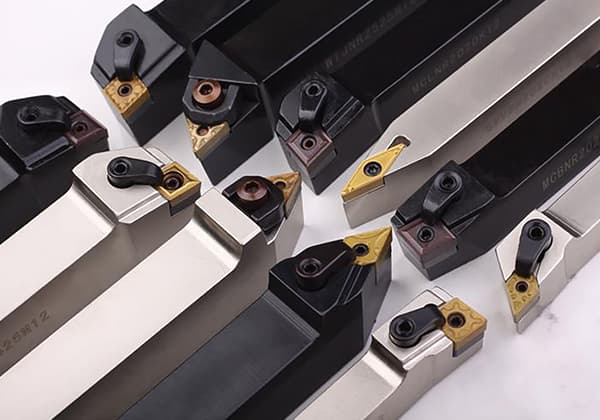
How often do we think about the subtle yet powerful influence of temperature on CNC machining accuracy? This article explores how thermal deformation affects the precision of machine tools, from ambient workshop temperature changes to internal heat generation during operations. Readers will learn the mechanisms behind these thermal impacts and discover strategies to minimize errors, ensuring higher machining accuracy and efficiency. Dive in to understand the critical role temperature control plays in modern CNC machining.
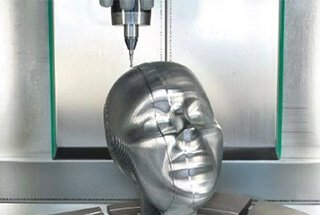
Thermal deformation is a critical factor influencing machining accuracy, with multifaceted effects on precision manufacturing processes. Fluctuations in ambient workshop temperature, heat generated from motor operation and mechanical movements, cutting processes, and cooling media can induce non-uniform temperature increases across various machine tool components. These thermal variations lead to dimensional changes, affecting both the machine’s form accuracy and overall machining precision.
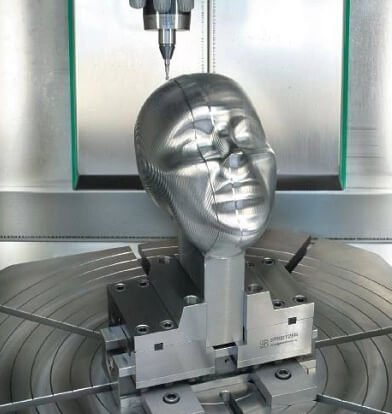
A case study involving the production of a 70mm x 1650mm screw on a standard-precision CNC milling machine illustrates the significance of thermal effects. The cumulative error difference between workpieces machined from 7:30 am to 9:00 am and those processed from 2:00 pm to 3:30 pm can reach up to 85μm. However, under controlled temperature conditions, this error can be substantially reduced to 40μm, demonstrating the potential for improved accuracy through thermal management.
Another example highlights the impact of thermal deformation on precision grinding operations. A high-precision double-end surface grinding machine, used for processing thin steel sheets with thicknesses ranging from 0.6mm to 3.5mm, experiences significant dimensional changes after continuous operation. Following one hour of automatic grinding, the dimensional variation increases to 12μm, coinciding with a coolant temperature rise from 17°C at startup to 45°C. This temperature increase causes thermal expansion of the spindle journal and an enlargement of the bearing clearance at the spindle’s front end. To mitigate these thermal effects, the integration of a 5.5kW refrigeration unit into the machine’s coolant system has proven effective in maintaining dimensional stability.
The impact of thermal deformation on machining accuracy is particularly pronounced in environments with fluctuating temperatures. During operation, machine tools convert a substantial portion of consumed energy into heat, resulting in physical alterations to various components. To address this challenge, machine tool designers must possess a comprehensive understanding of heat generation mechanisms and temperature distribution patterns within the system. This knowledge enables the implementation of targeted strategies to minimize the impact of thermal deformation on machining accuracy.
Effective thermal management techniques may include:
By incorporating these advanced thermal management strategies, manufacturers can significantly enhance machining accuracy and consistency, particularly in high-precision applications where thermal stability is paramount.
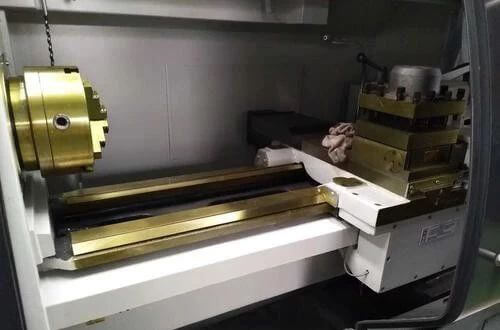
China is a large country, mostly located in the subtropics. The temperature varies greatly throughout the year and has different temperature fluctuations during the day. As a result, people’s interventions to regulate the temperature in the room, such as the workshop, also vary and the temperature around the machine tool is widely different.
For example, in the Yangtze River Delta, the seasonal temperature range is about 45°C, and the temperature change between day and night is about 5-12°C. The machining workshop usually doesn’t have heating in winter or air conditioning in summer, but as long as the workshop is well-ventilated, the temperature gradient in the workshop doesn’t change much.
In Northeast China, the seasonal temperature difference can reach 60°C, and the day and night change is about 8-15°C. The heating period lasts from late October to early April of the following year, and the machining workshop is designed to provide heating with insufficient air circulation. The temperature difference between inside and outside the workshop can reach 50°C, causing a complicated temperature gradient in winter. For example, when measured between 8:15 and 8:35 am, the outdoor temperature is 1.5°C, and the temperature change in the workshop is about 3.5°C.
The ambient temperature in such a workshop can greatly affect the machining accuracy of precision machine tools.
The surrounding environment of a machine tool refers to the thermal environment formed by various factors within close proximity of the machine tool. These factors include:
(1) Workshop Microclimate: such as temperature distribution in the workshop, which changes slowly with changes in day and night, climate, or ventilation.
(2) Workshop Heat Sources: such as solar radiation, heating equipment, and high-power lighting. These sources, when close to the machine tool, can have a direct and long-lasting effect on the temperature rise of the entire or part of the machine tool. Heat generated by adjacent equipment during operation can also affect the temperature rise of the machine tool via radiation or air flow.
(3) Heat Dissipation: The foundation should be able to dissipate heat effectively, especially the foundation of precision machine tools, which should not be located near underground heating pipelines. If a pipeline ruptures and leaks, it can become a heat source that is difficult to locate, but an open workshop can serve as a good “radiator” and help equalize the workshop temperature.
(4) Constant Temperature: Maintaining a constant temperature in the workshop can effectively preserve the precision and processing accuracy of precision machine tools, but it can also lead to high energy consumption.
(1) Structural Heat Sources of Machine Tools
The heating of motors, such as the spindle motor, servo feed motor, cooling and lubrication pump motor, electric control box, etc., can all generate heat. Although these conditions are acceptable for the motors themselves, they have a significant impact on components such as the spindle and ball screw. Measures should be taken to isolate them.
When electric energy drives the motor to run, most of it will be converted into kinetic energy by motion mechanisms, such as spindle rotation and table motion, while a small part (about 20%) is converted into thermal energy of the motor. However, a considerable part is inevitably converted into frictional heat during movement. Components such as bearings, guide rails, ball screws, and gearboxes also generate heat.
(2) Cutting Heat during the Process
During the cutting process, some of the kinetic energy of the tool or workpiece is consumed by the cutting work. A significant portion is converted into the deformation energy of the cutting and the frictional heat between the chip and tool, which generates heat in the tool, spindle, and workpiece. Additionally, a large amount of chip heat is transmitted to the machine tool’s table fixture and other components, which will directly affect the relative position between the tool and workpiece.
(3) Cooling
Cooling is a countermeasure against the temperature rise of the machine tool, such as cooling motors, spindle components, and infrastructure. High-end machine tools often use refrigerators to cool their electronic control boxes.
In the field of machine tool thermal deformation, the structure of the machine tool is generally referred to in terms of its structural form, mass distribution, material properties, and heat source distribution. The structure shape affects the temperature distribution, heat conduction direction, thermal deformation direction, and matching of the machine tool, among other factors.
(1) Structural form of the machine tool: In terms of overall structure, machine tools can be vertical, horizontal, gantry, or cantilever types, which have large differences in thermal response and stability. For example, the temperature rise of a gear-shift lathe headstock can be as high as 35°C, and it takes about 2 hours for the thermal equilibrium to be reached when the spindle end is lifted. In contrast, the temperature rise for a slant bed type precision turning and milling machining center is generally less than 15°C as it has a stable base that improves the rigidity of the whole machine and a servo motor that drives the main shaft.
(2) Influence of heat source distribution: Machine tools usually consider the electric motor as the heat source, such as the spindle motor, feed motor, hydraulic system, etc. However, this is an incomplete view as a considerable part of the energy is consumed by the heating caused by the frictional work of bearings, screw nuts, guide rails, and chips. The motor can be considered a primary heat source, while the bearings, nuts, guide rails, and chips can be considered secondary heat sources, and thermal deformation is the result of their combined effects.
(3) Effect of mass distribution: The influence of mass distribution on thermal deformation has three aspects: (i) size and concentration of mass, which affects heat capacity and speed of heat transfer, and time to reach thermal equilibrium, (ii) changing the quality of the layout, such as adding various ribs to improve thermal rigidity, reduce thermal deformation, or keep relative deformation small under the same temperature rise, and (iii) reducing temperature rise of machine tool components by changing the quality arrangement form, such as adding heat dissipation ribs outside the structure.
(4) Influence of material properties: Different materials have different thermal performance parameters, such as specific heat, thermal conductivity, and linear expansion coefficient. Under the same heat, their temperature rise and deformation will be different.
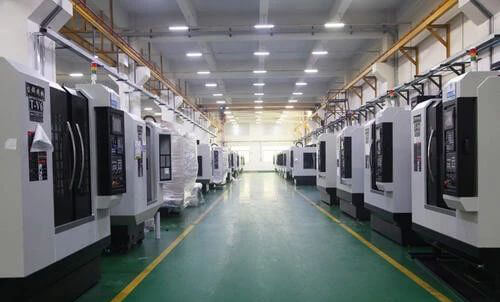
The key to controlling thermal deformation in machine tools is a thorough understanding of changes in ambient temperature, heat sources, and temperature changes within the machine tool, as well as the response of key points (deformation displacement) through thermal testing. By measuring the thermal characteristics of the machine tool, countermeasures can be taken to control thermal deformation and improve the machine’s accuracy and efficiency.
The following objectives should be achieved through testing:
(1) Testing the Machine Environment: Measure the temperature in the workshop, the spatial temperature gradient, the temperature distribution changes throughout the day and night, and the impact of seasonal changes on the temperature distribution around the machine tool.
(2) Thermal Characteristics Testing of the Machine Tool: Eliminate environmental interference as much as possible and measure temperature changes and displacement changes of important points in the machine tool during various operating states. Record temperature changes and key point displacements for a sufficient amount of time, using infrared thermal imaging instruments to capture thermal distribution at each time period.
(3) Testing Temperature Rise and Thermal Deformation During Processing: Evaluate the impact of thermal deformation on processing accuracy by measuring the temperature rise and thermal deformation during processing.
(4) Data and Curve Accumulation: Experiments can accumulate a large amount of data and curves, providing reliable criteria for machine tool design and control of thermal deformation, and indicating the direction for effective measures.
The thermal deformation test begins by measuring the temperature of several relevant points, including:
(1) Heat source: such as the feed motor, spindle motor, ball screw drive pair, guide rail, and spindle bearings of each part.
(2) Auxiliary devices: including the hydraulic system, refrigerator, cooling and lubrication displacement detection system.
(3) Mechanical structure: including the bed, base, slide, column, and milling head box, as well as the spindle. An indium steel probe is clamped between the spindle and the rotary table.
Five contact sensors are arranged in the X, Y, and Z directions to measure comprehensive deformation in various states, simulating the relative displacement between the tool and workpiece.
The thermal deformation test of the machine tool should be performed over a long continuous period and continuous data recording should be done. After analysis and processing, the reliability of the reflected thermal deformation characteristics can be very high, and if error rejection is performed through multiple experiments, the regularity shown is credible.
In the thermal deformation test of the spindle system, a total of five measurement points were set, with point 1 at the end of the spindle and point 2 near the spindle bearing, and points 4 and 5 located near the Z-direction guide rail in the milling head housing. The test lasted 14 hours, with the spindle speed alternately changing in the range of 0 to 9000 r/min for the first 10 hours, and then continuing to rotate at a high speed of 9000 r/min for the remaining time.
The following conclusions can be drawn from the test:
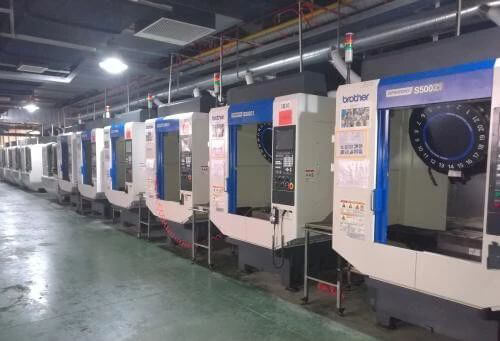
From the analysis and discussion, it is evident that the temperature rise and thermal deformation of machine tools can significantly impact their processing accuracy. When taking control measures, it is crucial to identify the main contributing factors and focus on a few effective measures to achieve optimal results.
In the design process, attention should be given to reducing heat generation and temperature rise, creating a balanced structure, and providing efficient cooling.
Control of heat sources is a fundamental measure to reduce temperature rise and thermal deformation of machine tools. To achieve this, the following steps should be taken in the design process:
(1) Selecting the rated power of the motor reasonably: The output power of the motor is proportional to the voltage and current. In general, the voltage is constant, and an increase in the load leads to an increase in the output power and current, resulting in increased heat consumed by the armature impedance. To minimize the temperature rise of the motor, it is better to select a rated power that is about 25% greater than the calculated power.
(2) Reducing heat generation from secondary heat sources: To minimize the temperature rise from secondary heat sources, measures should be taken in the design of the machine structure. For example, improving the coaxiality of the front and rear bearings and using high-precision bearings can reduce friction and heat generation. Replacing sliding guides with linear rolling guides or using a linear motor can also reduce heat generation.
(3) Using high-speed cutting in the machining process: High-speed cutting reduces heat generation during the cutting process. When the linear speed of metal cutting is above a certain range, the metal does not have time to undergo plastic deformation, and no deformation heat is generated on the chips. Most of the cutting energy is converted into chip kinetic energy and taken away.
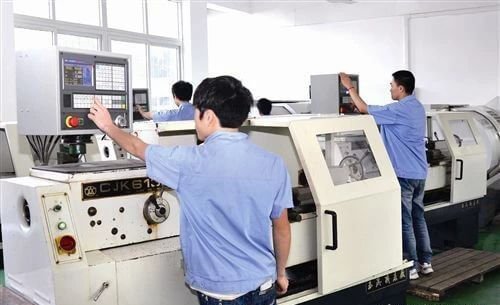
The control of thermal deformation in machine tools requires attention to the direction and speed of heat transfer to reduce its effects. A symmetrical structure helps distribute heat evenly, reducing drift and deformation.
(1) Prestressing and Thermal Deformation
In high-speed feed systems, ball screws are often pre-tensioned at both ends to reduce thermal deformation errors. The axial pre-tensioning structure reduces the cumulative error compared to a structure that is fixed at one end and free at the other. The main effect of temperature rise in this structure is to change the stress from tensile to zero or compressive, having little effect on displacement accuracy.
(2) Change the Structure and Deformation Direction
The Z-axis spindle slide of a CNC needle slot milling machine with a different ball screw axial fixing structure requires a milling slot error of 0.05mm. The floating end structure ensures the change in groove depth during processing, whereas the axial floating structure results in a gradual deepening of the groove.
(3) Symmetrical Geometry
A symmetrical machine tool structure minimizes thermal deformation and drift of the tool point. The YMC430 micro-machining center is an example of a machine that has considered thermal performance in its design. It has a completely symmetrical layout, with integrated H-shaped columns and beams, a circular spindle slide, and linear motors for the three moving shafts. The two rotary shafts use direct drive, minimizing friction and mechanical transmission.
(1) The coolant during processing directly affects the accuracy of processing.
A comparative test was carried out on a GRV450C double-face grinder and showed that the heat exchange treatment of the cooling liquid by means of a refrigerator greatly improves the processing accuracy.
Traditional coolant supply methods caused the workpiece size to be out of tolerance after 30 minutes, while using a refrigerator allowed for normal processing for over 70 minutes. The excessive size of the workpiece after 80 minutes was due to the need to trim the grinding wheel, which removed metal shavings from the wheel surface. The original machining accuracy was immediately restored after trimming and the effect was very noticeable.
Similarly, forced cooling of the spindle can also result in very good outcomes.
(2) Increasing the natural cooling area.
For instance, adding natural air cooling areas to the structure of the main shaft box can also play an important role in heat dissipation in a workshop with good air circulation.
(3) Timely removal of chips.
Timely or real-time removal of high-temperature chips from the workpiece, table, and tool greatly reduces the temperature rise and thermal deformation of critical parts.
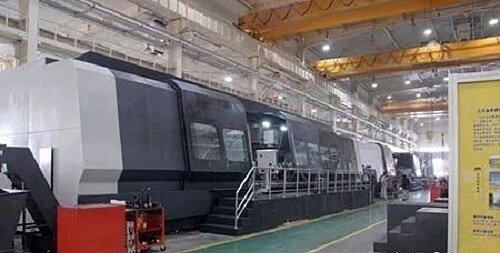
Controlling thermal deformation in machine tools is a critical challenge in modern precision machining, with multifaceted influencing factors. The convergence of high-speed, high-efficiency, and high-precision cutting processes has exacerbated this issue, drawing significant attention from the machine tool manufacturing sector.
Extensive research by both domestic and international experts in the machine tool industry has yielded substantial advancements in understanding thermal deformation, establishing it as a fundamental theory in the field.
This article explores the impact of design, application, measurement, and analysis methodologies on the thermal performance of machine tools, proposing strategies for design enhancement.
To optimize the thermal performance of machine tools, the following comprehensive approach should be implemented:
1. Environmental Consideration: During the design phase of advanced machine tools, thoroughly assess and account for the specific environmental conditions of the intended operational setting. This includes ambient temperature fluctuations, humidity levels, and potential thermal gradients within the workspace.
2. Heat Source Management: Implement rigorous control and strategic configuration of heat sources. This encompasses:
3. Cooling System Prioritization: Reevaluate traditional design hierarchies by elevating cooling, heat dissipation, lubrication, and chip removal systems from auxiliary to critical components. Integrate advanced cooling technologies such as targeted liquid cooling, thermoelectric cooling, or phase-change materials to maintain thermal stability.
4. Structural Symmetry and Thermal Deformation Mitigation: Incorporate symmetrical design principles and consider the directional aspects of thermal deformation. This approach aims to minimize accuracy deviations caused by thermal effects. Key strategies include:
By meticulously addressing these aspects, manufacturers can significantly enhance the thermal stability and precision of modern machine tools, thereby improving overall machining accuracy and efficiency.

